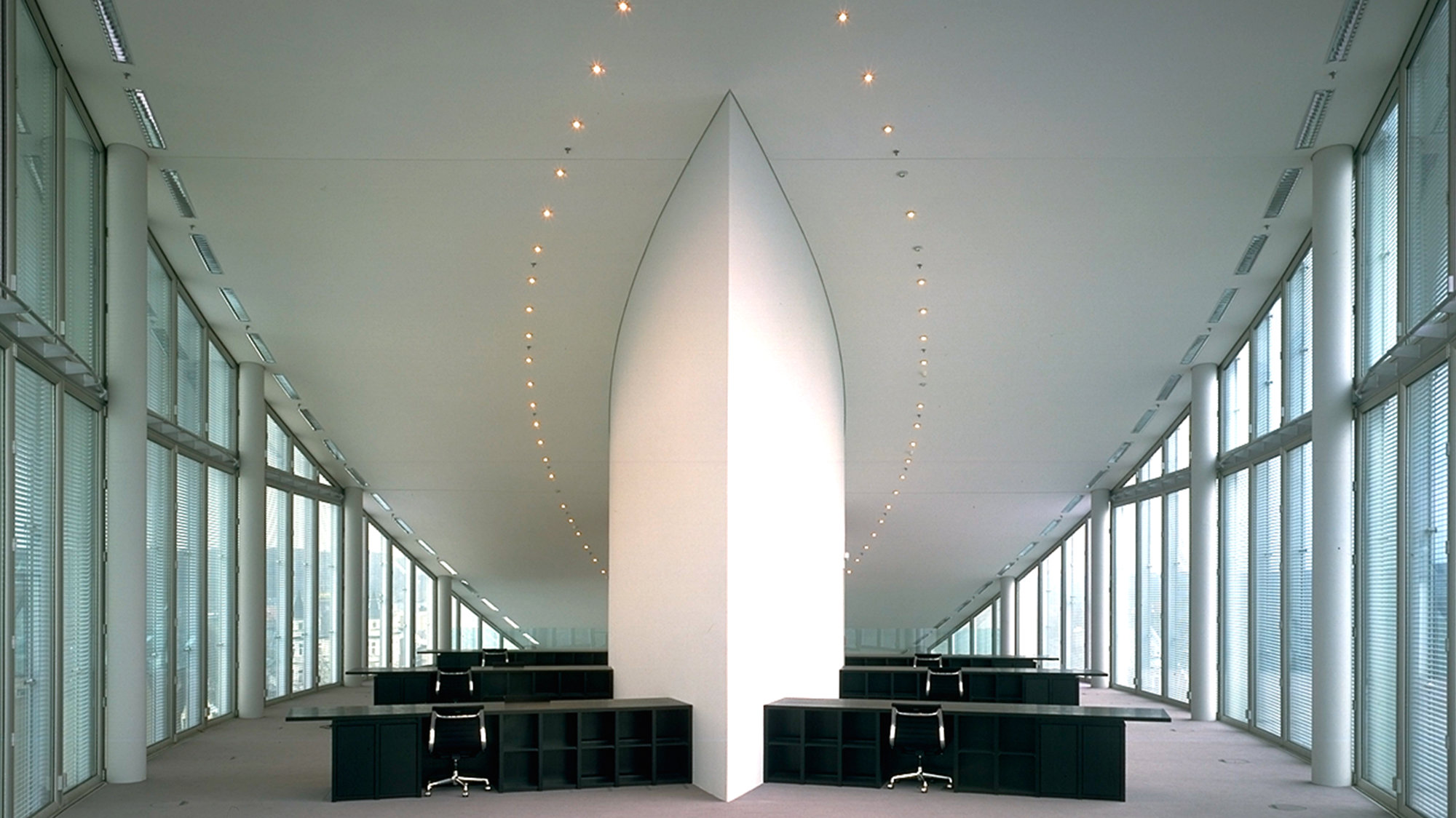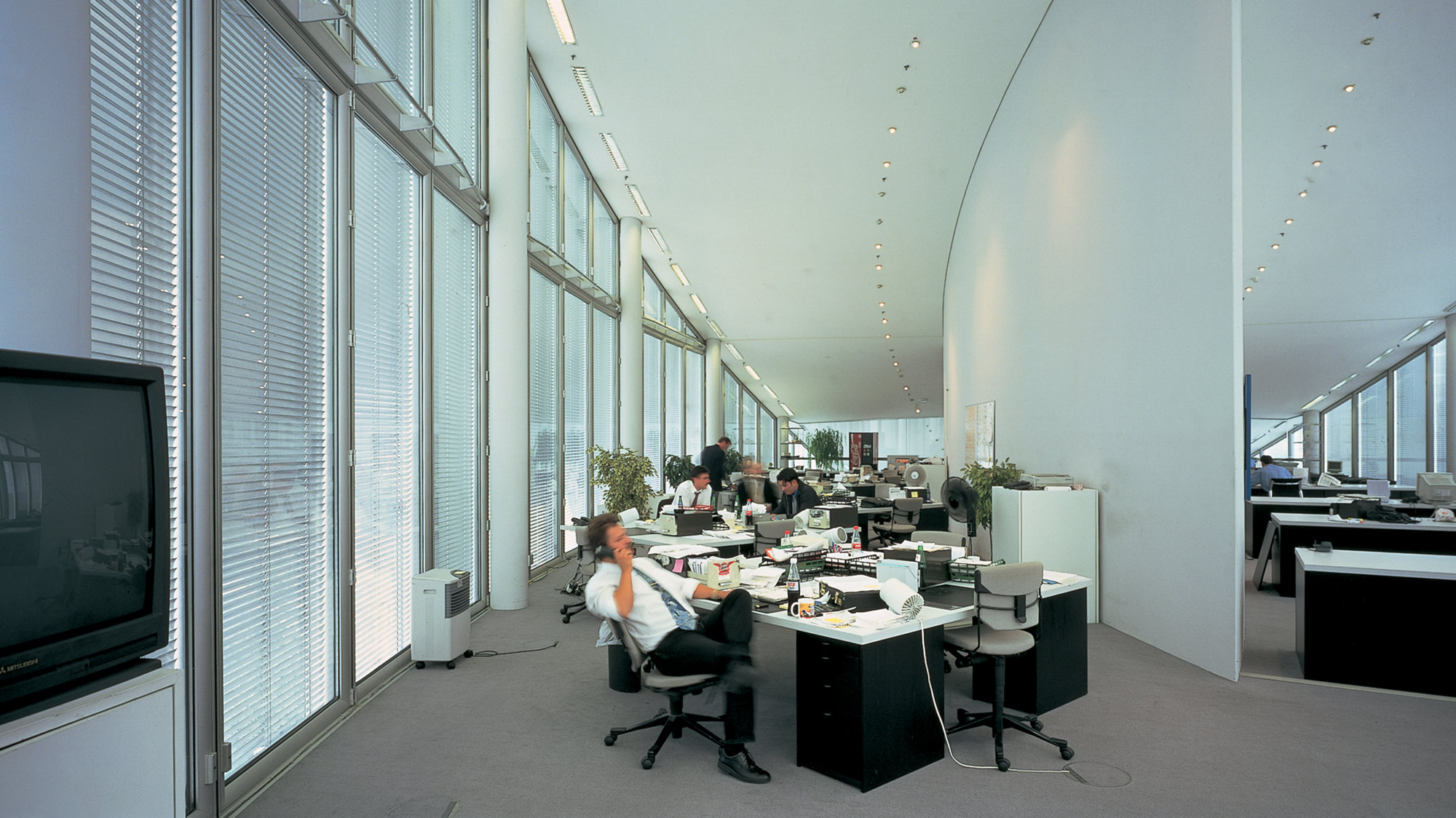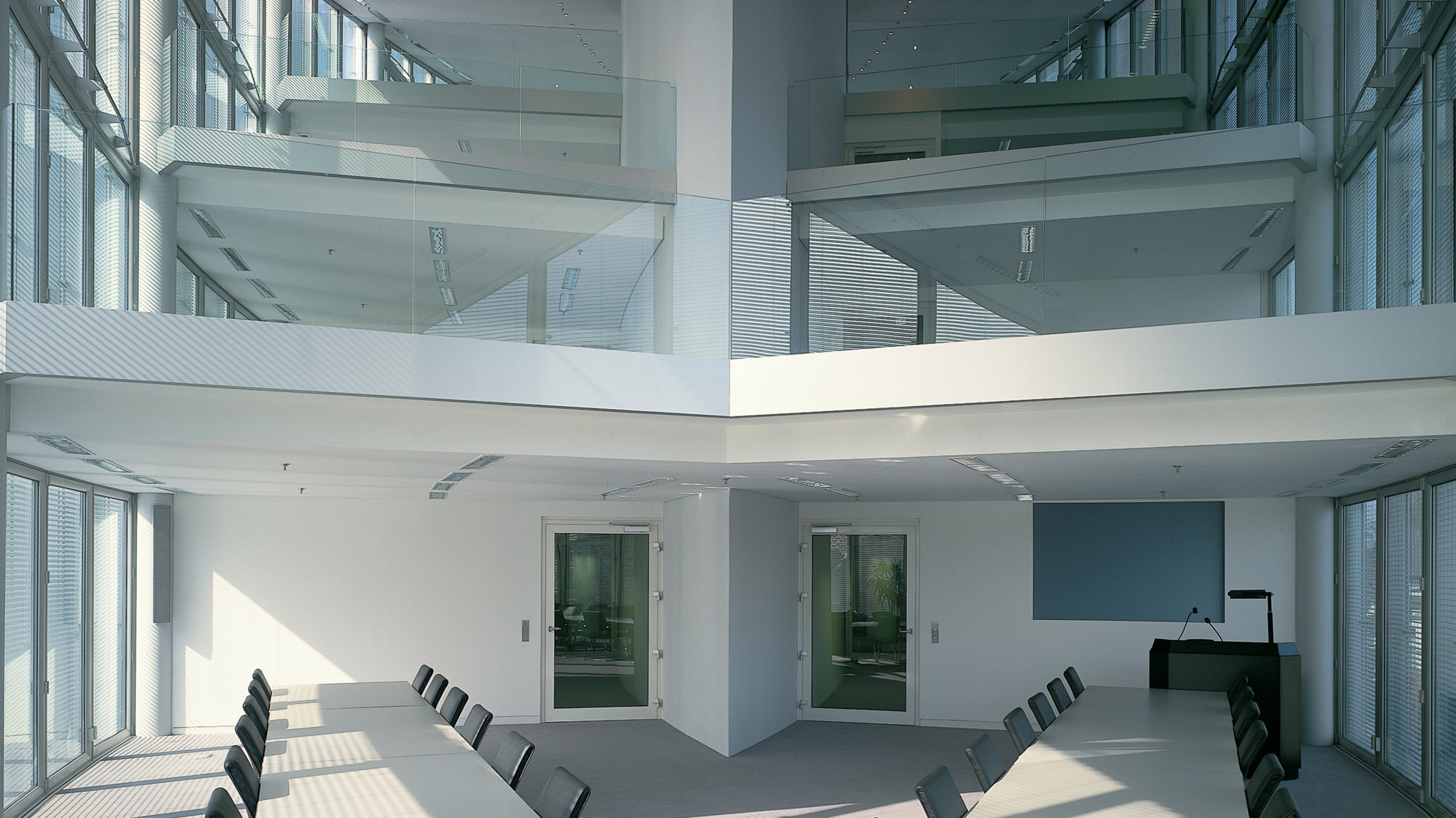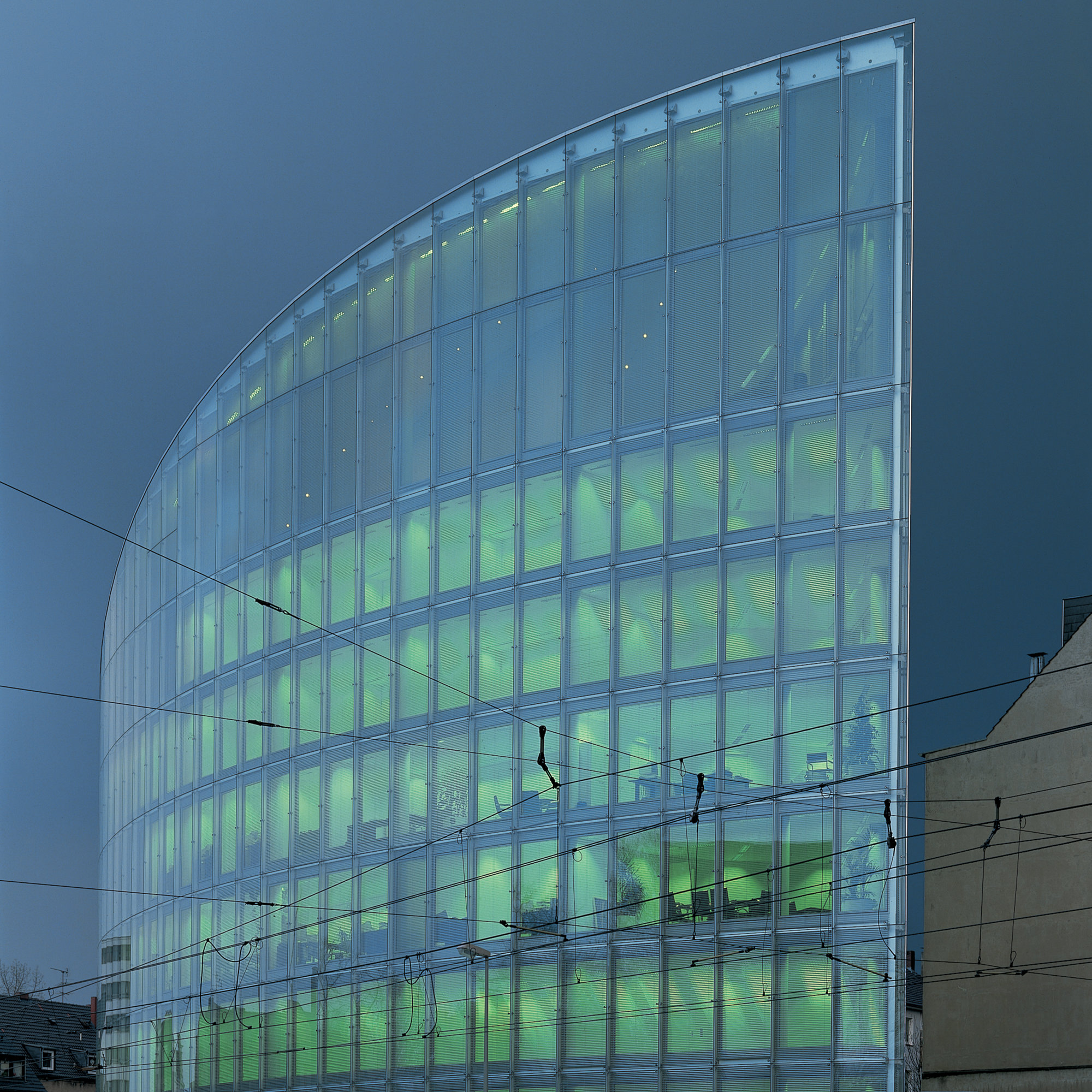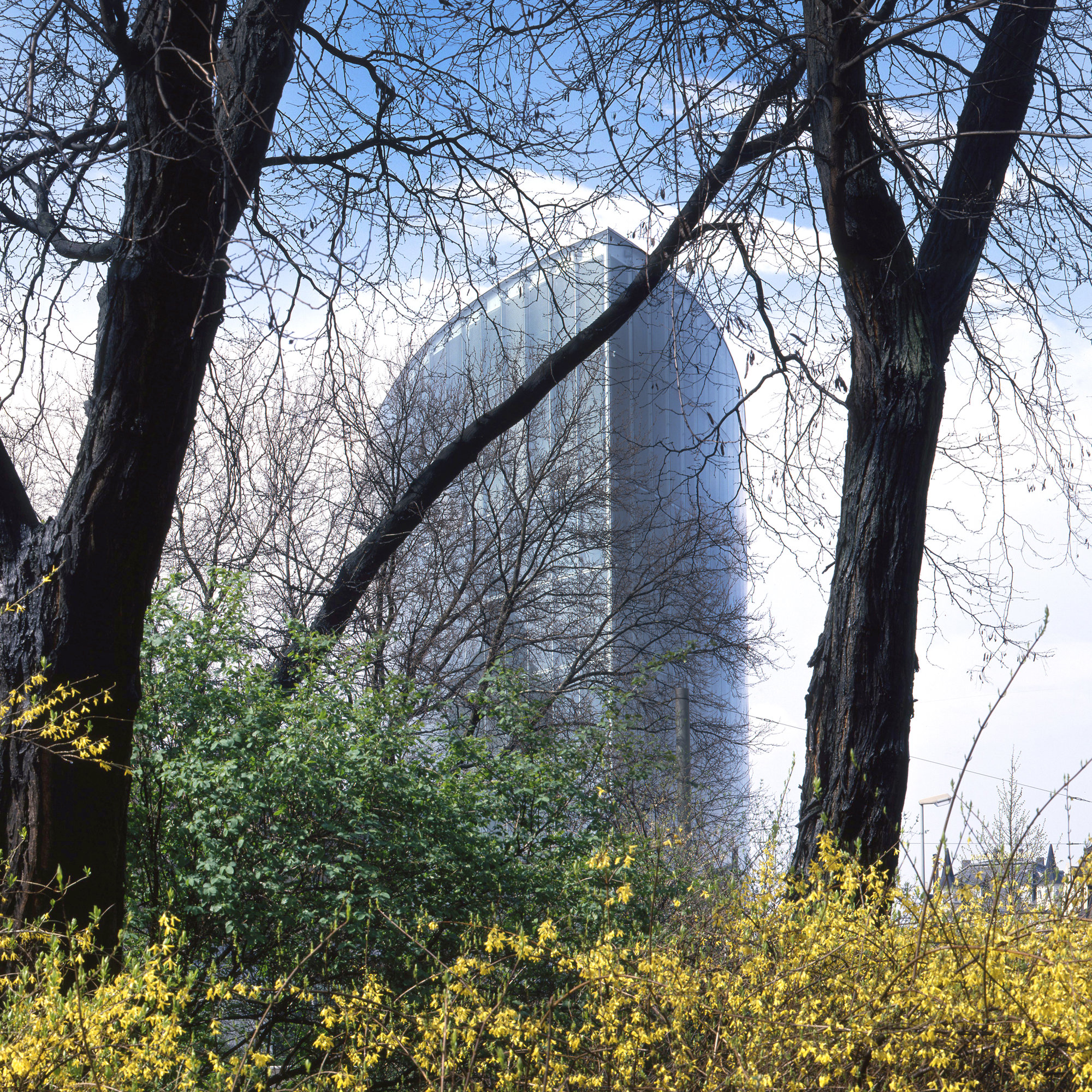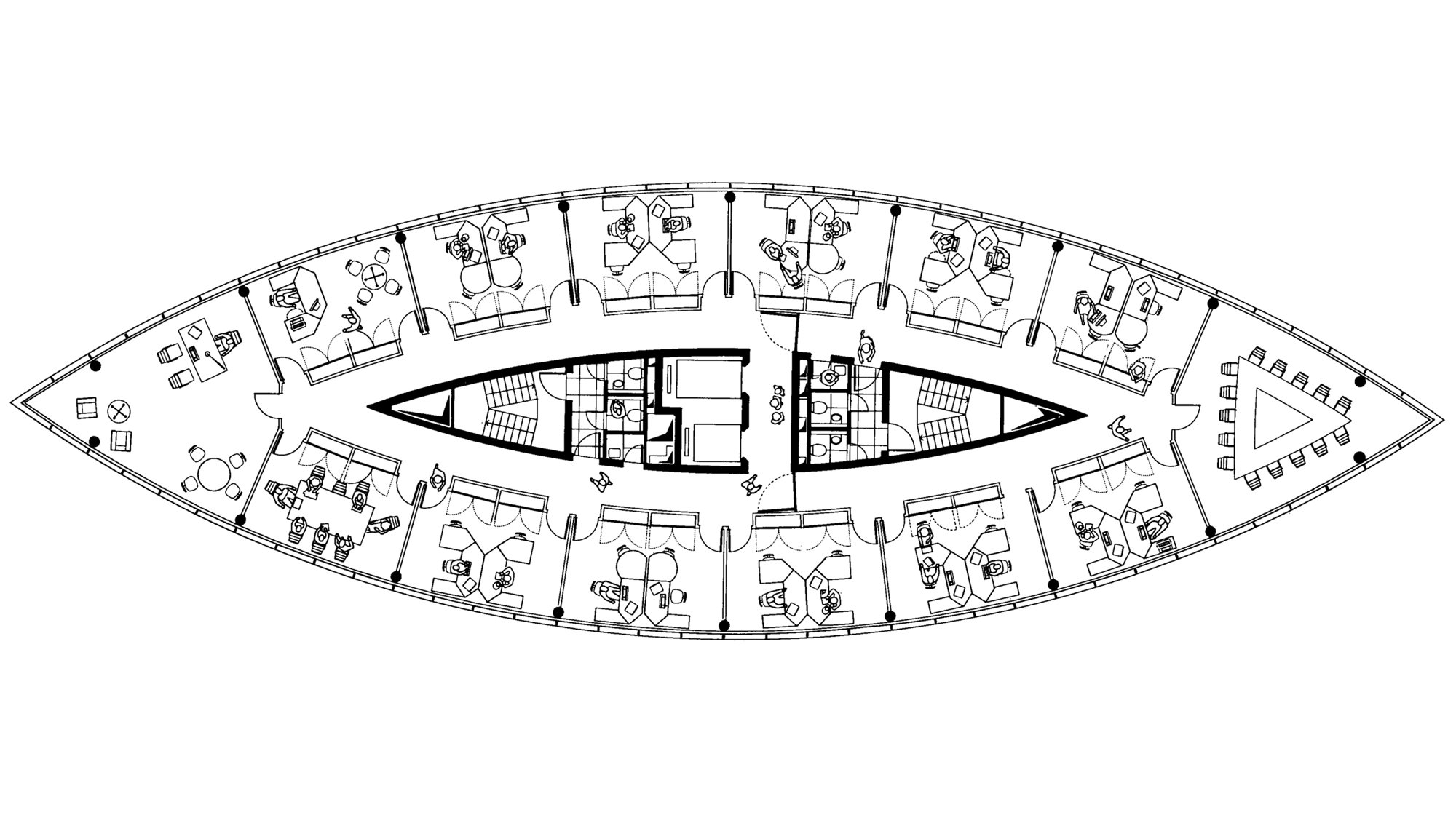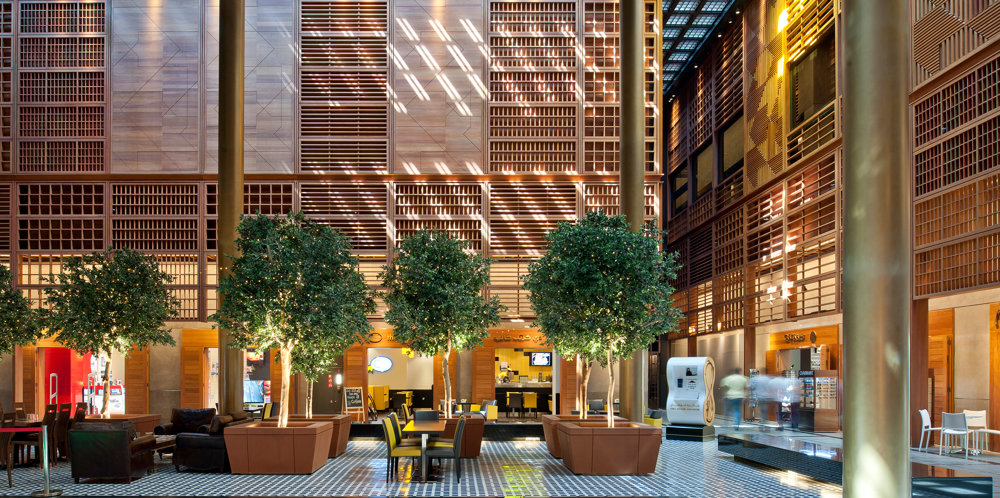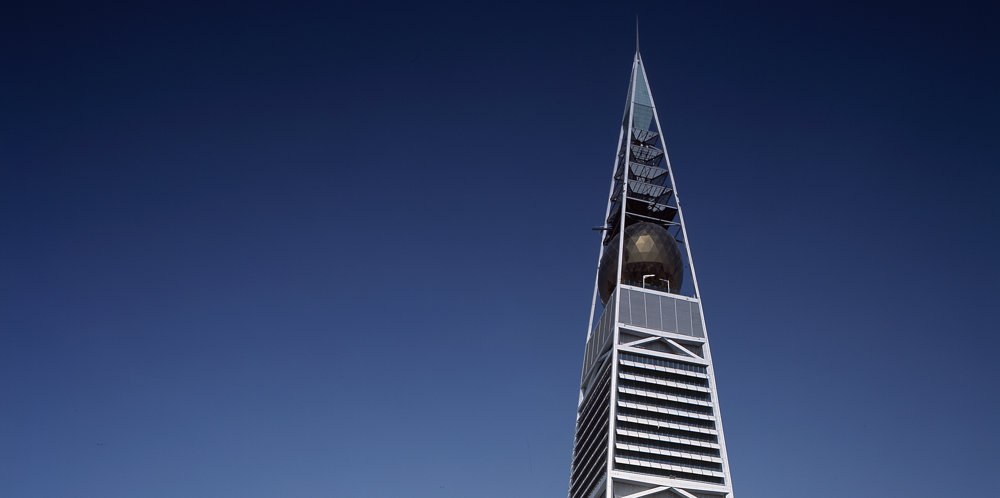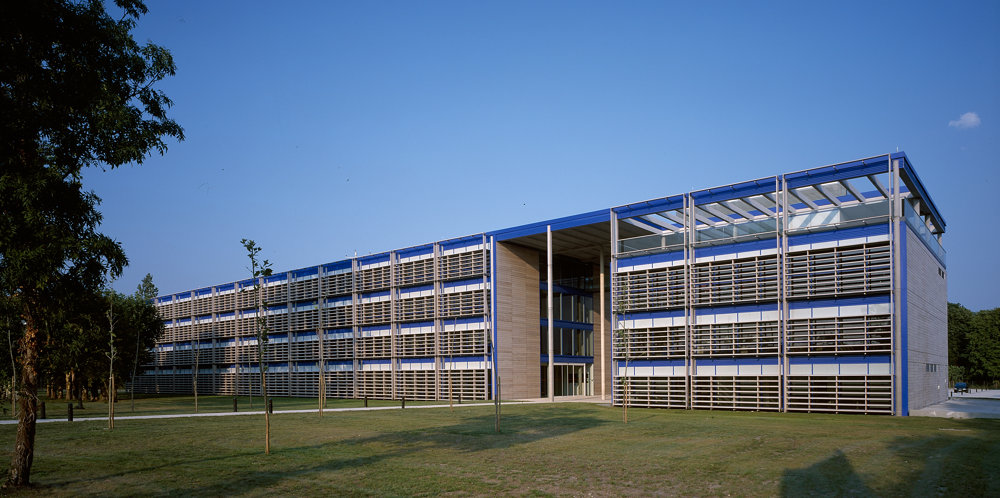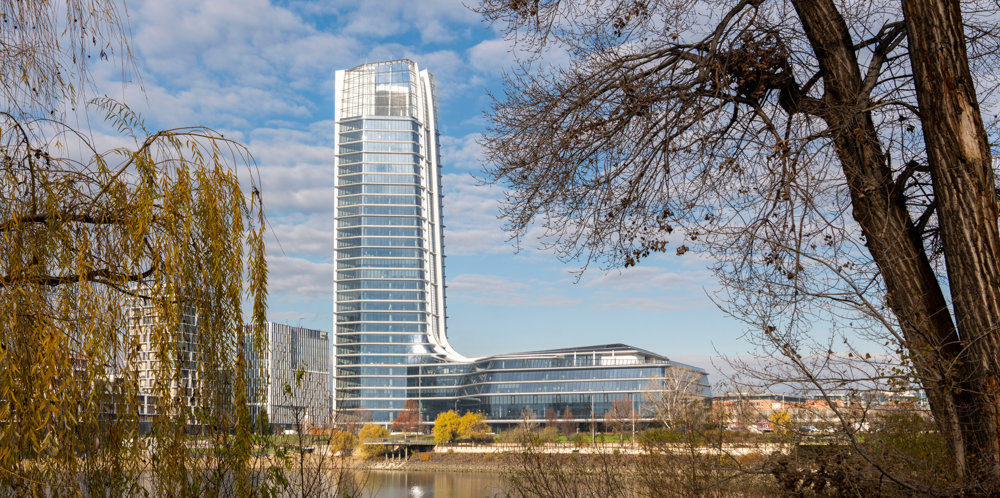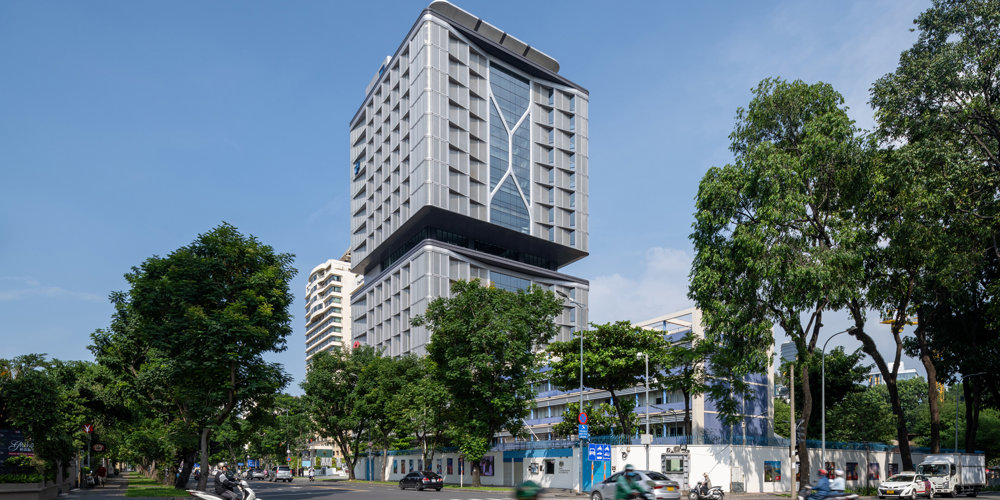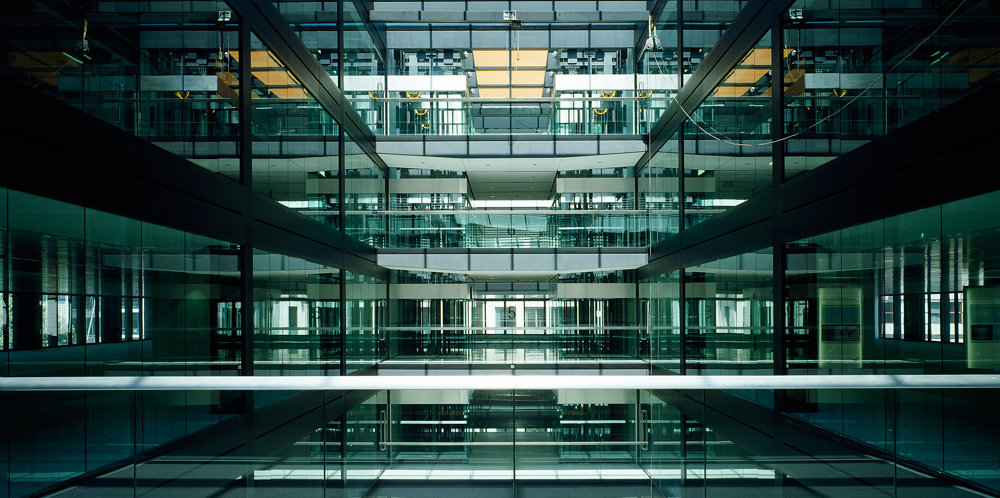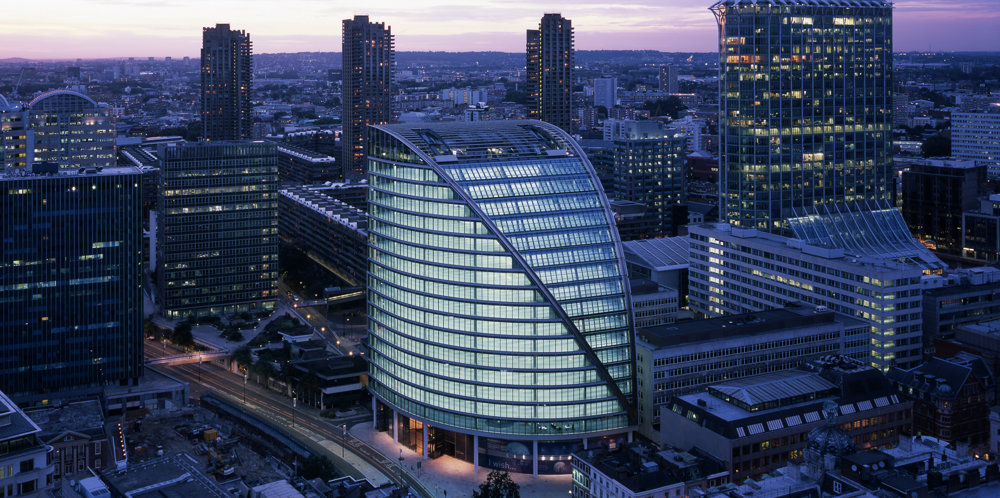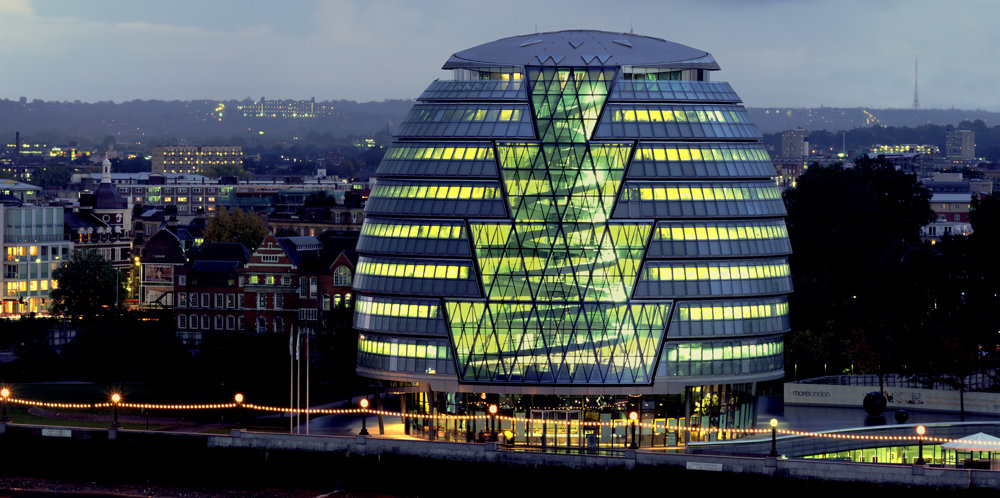In Germany, where the issues of energy and pollution are taken more seriously than elsewhere, the practice has demonstrated the financial case for going beyond even the standards set by legislation. The Business Promotion Centre demonstrates that sensible energy systems can, in some cases, help to reduce the first cost of a building; it is a landmark in the quest to revive business and promote social change in the Ruhr area.
The seven-storey building is lens-shaped on plan with a steel roof curving down over its three terraced upper floors. At ground level, the entrance extends into a double-height banking and exhibition hall. The intermediate floors are a combination of cellular offices and meeting spaces, culminating in the grand internal three-storey terrace.
The outer skin is multi-layered and so efficient that no heating is required, even in the coldest northern winter. Cooling systems, rather than occupying a huge floor or ceiling void, have been miniaturised and integrated within the fabric of the building. Instead of using chilled air, dramatic drops in temperature can be achieved by moving chilled water through pipes, distributed through a system similar to the fins on a car radiator.
The building generates and harvests its own energy. It burns natural gas and, by means of a cogenerator, makes its own electricity. The by-product of that process - heat that would normally be wasted - is put through an absorption cooling plant to produce chilled water. This is not only an ecologically responsible solution: the developer makes a significant annual profit from energy management.









